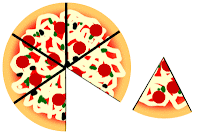As I started to brainstorm how to introduce our addition and subtraction unit in kindergarten, I thought about how this unit tends to be organized. Typically, students are taught the concept of addition and then learn a series of strategies that can be used to help them solve various addition problems. They practice adding by utilizing these strategies such as a number line, drawing a picture, counting objects, or acting out the problem. After mastering addition, students are then taught subtraction in the same manner. Of course, there is the hope that subtraction comes easier after learning addition due to the inverse relationship. However, it is not always the case. Usually, teachers then spend time drawing the connection between addition and subtraction by discussing fact families or a variety of other concepts to allow students to understand the correlation.

While I strongly considered doing just that, in the end, I wondered if it would be more appropriate to teach the connection between addition and subtraction from the start. I decided to begin the unit by briefly addressing the concept of both addition and subtraction. We discussed how a whole is the total amount, just like a whole pizza. Then, we discussed that if we wanted to eat some of that pizza we would take part of it. There would be another part of the pizza left. Additionally, we decided that if we put both of those parts back together we would have the whole pizza again.

At this point the students were eager to try it out. Each student got a Part-Part-Whole Workmat and five cubes. We put some of the cubes (or none) in one 'part box' and then the rest in the other 'part box'. We simply pushed both parts together into the 'whole box', and as we did this students would say 2 and 3 is 5. After a few minutes we flipped the workmat upside-down and started with 5 in the 'whole box', pulled out part, and found the other part was left. Students would say 5 take away 2 is 3 or 5 is 2 and 3. They quickly realized that there were only so many combinations when using 5, which lead them to notice the relationship between putting two parts together and taking one part away from the whole. A few students made the connection between addition and subtraction independently on the first day of the unit! Success! Hopefully, this success continues as we discuss how addition and subtraction are related in the coming lessons!
 While I strongly considered doing just that, in the end, I wondered if it would be more appropriate to teach the connection between addition and subtraction from the start. I decided to begin the unit by briefly addressing the concept of both addition and subtraction. We discussed how a whole is the total amount, just like a whole pizza. Then, we discussed that if we wanted to eat some of that pizza we would take part of it. There would be another part of the pizza left. Additionally, we decided that if we put both of those parts back together we would have the whole pizza again.
While I strongly considered doing just that, in the end, I wondered if it would be more appropriate to teach the connection between addition and subtraction from the start. I decided to begin the unit by briefly addressing the concept of both addition and subtraction. We discussed how a whole is the total amount, just like a whole pizza. Then, we discussed that if we wanted to eat some of that pizza we would take part of it. There would be another part of the pizza left. Additionally, we decided that if we put both of those parts back together we would have the whole pizza again.  At this point the students were eager to try it out. Each student got a Part-Part-Whole Workmat and five cubes. We put some of the cubes (or none) in one 'part box' and then the rest in the other 'part box'. We simply pushed both parts together into the 'whole box', and as we did this students would say 2 and 3 is 5. After a few minutes we flipped the workmat upside-down and started with 5 in the 'whole box', pulled out part, and found the other part was left. Students would say 5 take away 2 is 3 or 5 is 2 and 3. They quickly realized that there were only so many combinations when using 5, which lead them to notice the relationship between putting two parts together and taking one part away from the whole. A few students made the connection between addition and subtraction independently on the first day of the unit! Success! Hopefully, this success continues as we discuss how addition and subtraction are related in the coming lessons!
At this point the students were eager to try it out. Each student got a Part-Part-Whole Workmat and five cubes. We put some of the cubes (or none) in one 'part box' and then the rest in the other 'part box'. We simply pushed both parts together into the 'whole box', and as we did this students would say 2 and 3 is 5. After a few minutes we flipped the workmat upside-down and started with 5 in the 'whole box', pulled out part, and found the other part was left. Students would say 5 take away 2 is 3 or 5 is 2 and 3. They quickly realized that there were only so many combinations when using 5, which lead them to notice the relationship between putting two parts together and taking one part away from the whole. A few students made the connection between addition and subtraction independently on the first day of the unit! Success! Hopefully, this success continues as we discuss how addition and subtraction are related in the coming lessons!

No comments:
Post a Comment